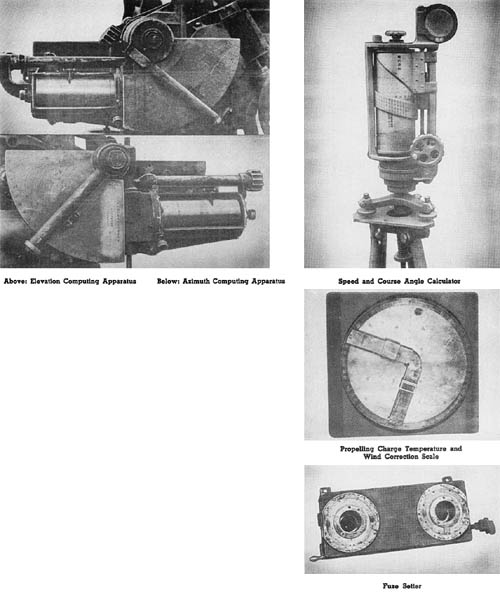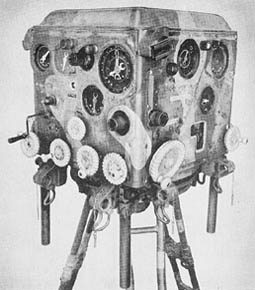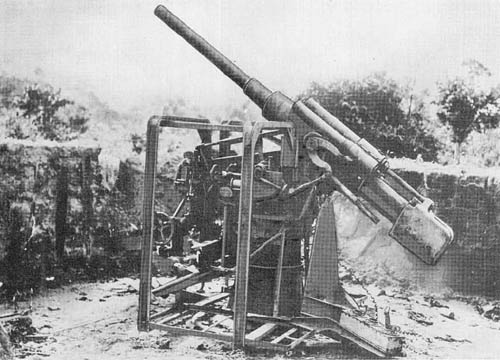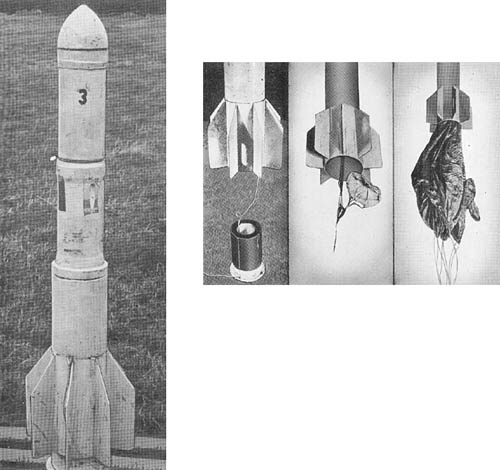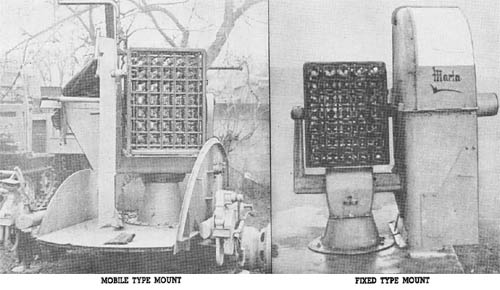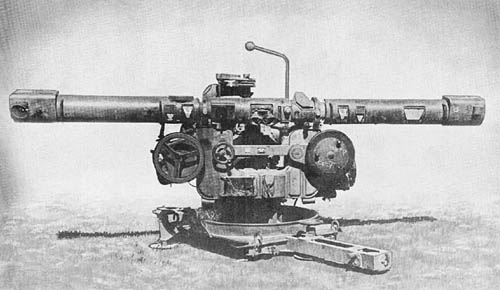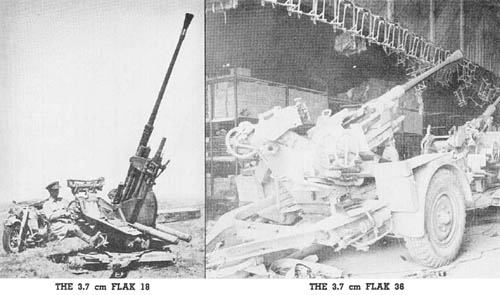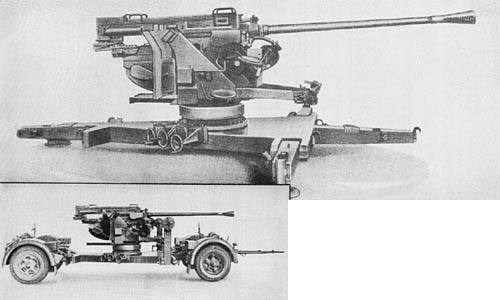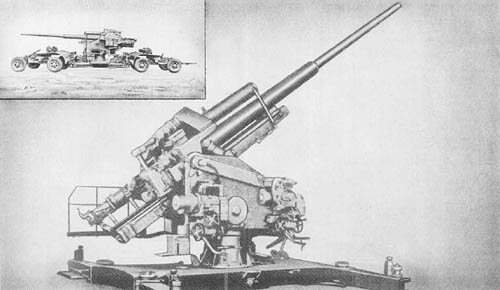
This weapon, together with the 8.8 cm Flak 41, is Germany’s standard heavy antiaircraft gun. There are four different type mounts used with the gun: mobile, static, railway, and a twin mounting. When used with the latter, the equipment is known as the 12.8 cm Flakzwilling.
In construction and appearance this weapon resembles the 10.5 cm antiaircraft gun described on page 109. The barrel consists of a three-piece tube with jacket and sleeve. The breech mechanism is of the horizontal sliding block type, and an electric firing device is used. A hydropneumatic recuperator is located above the barrel, and a hydraulic buffer below.
Elevating and traversing may be operated either by power or by handwheels; are located on the right side of the equipment with the layers seated facing the gun. A machine fuze setting gear and loading and ramming gear identical with those of the 10.5 cm Flak are used.
The static mounting is a pedestal type secured to a concrete base. The cradle pivots in trunnions mounted at the extreme rear of the upper carriage, and almost in line with the breechblock. A large box-like construction, located underneath the buffer and forward of the elevating arc, contains the oil motors. The equilibrators extend from an anchoring just forward of the trunnions to the forward edge of the casing containing the oil motors.
The gun being extremely high off the ground, platforms for the gun crew are provided. The gun is fitted to receive firing data by remote control transmission. A normal panoramic sight is provided as well as an antitank sight.
SPECIFICATIONS
| Caliber | | 12.8 cm (5.04 ins.) |
| Weight (static mount) | | 28,600 lbs. |
| Weight (traveling position) | | 59,400 lbs. |
| Mobile mount |
| Weight (firing position) |
|
37,400 lbs. |
| Mobile mount |
| Length (traveling position) |
|
49 ft. |
| overall |
| Length (firing position) |
|
29 ft. |
| overall |
| Height (traveling position) |
| Height (firing position) |
| Height of trunnions (firing position) |
|
7 5/8 ft. |
| Width (overall) |
| Length of piece |
|
308.5 ins. (61 calibers) |
| Length of rifling |
| 255.13 ins. |
| Twist of rifling (increasing) |
|
3° 20′ to 5° 30′ |
| No. of grooves |
|
40 |
| Width of grooves (forward section) |
|
0.26 in. |
| (center section) |
|
0.25 in. |
| Depth of grooves |
|
0.06 in. |
| Width of lands (forward section) |
|
0.13 in. |
| (center section) |
|
0.14 in. |
| Muzzle velocity (H.E. shell) |
|
2,886 f/s |
| Max. range (horizontal) |
|
20,950 meters (22,910 yds.) |
| Max. ceiling at 85° |
|
14,800 meters (48,555 ft.) |
| Rate of fire |
|
12 r.p.m. |
| Traverse |
|
360° |
| Elevation |
|
88° |
| Depression |
|
-3° |
| Length of recoil |
|
from 36 to 51 ins. |
| Ammunition |
|
A.P.C., H.E. |
| Wt. of complete round (approx.) |
|
106 lbs. |
| Wt. of H.E. projectile (12.8 cm Sprgr. Patr. I. 4.5) |
|
57 lbs. |
| Wt. of A.P.H.E. projectile (12.8 cm Pzgr. Patr.) |
|
58.13 lbs. |
German: p. 106.1 (August 1, 1945)
